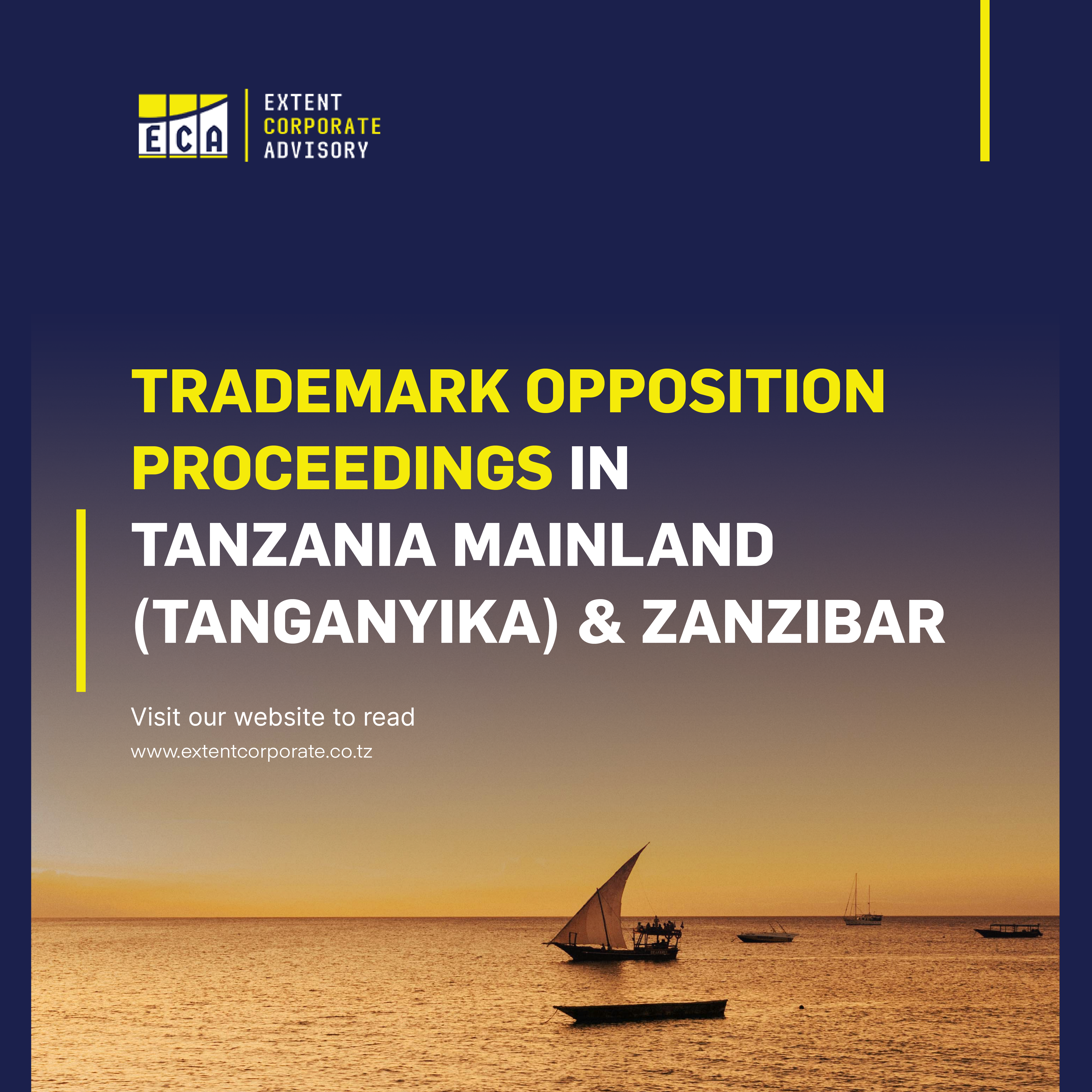01: Introduction
The journey of registering a trademark often involves potential opposition. Following submission, a trademark application undergoes examination by the registrar of trademarks. Upon approval, the trademark proceeds for publication in the trademark Official Gazette, a monthly publication accessible to the public on the Business Registrations and Licensing Agency (BRELA) website for Tanzania Mainland and the Zanzibar Business and Property Registration Agency (BPRA) for Zanzibar. Subsequently, the general public has the opportunity to review the published trademark and file an opposition within sixty (60) days. Successful opposition can prevent the registration of the trademark, while the absence of opposition allows the application to proceed to the next stage of registration.
02: Laws
Trademark oppositions in both Tanzania Mainland and Zanzibar are governed by the following laws:
The Trade and Service Marks Act Act No: 12 of 1986.
The Trade and Service Marks Regulation G.N. No 40 of 2000.
The Zanzibar Industrial Property Act No: 4 of 2008.
The Zanzibar Industrial Property Regulations G.N. No: 48 of 2015.
03: Grounds for Trademark Opposition
Opposition may be based on various grounds, including but not limited to:
- Similarity or identity to an existing registered mark.
- Descriptiveness of the mark.
- Likelihood of causing confusion with an existing business or company name.
- Unauthorized filing by a representative.
- Likelihood of deception or confusion with an earlier unregistered mark used by a third party.
04: How Can the Public Oppose a Trademark?
Public members can oppose a trademark by filing a Notice of Opposition, stating the grounds for opposition. Attachment of supporting documents is not mandatory when filing the notice. In Tanzania Mainland, if the opposition is based on similarity to existing marks, the numbers of such marks should be cited.
- Filling of the trademark opposition notice
- Filling of the counter-statement
- Filling evidence in support of opposition
- Filling evidence in support of application
- Final decision of the trademark authorities
i. Filling Notice of Opposition
A Notice of opposition will state the grounds on which the opposing party believes that the trademark should not be registered. Attachment of supporting documents is not required while filling a notice of opposition on form TM/SM 5. In Zanzibar, the registrar will publish notice of opposition in the official Journal within sixty days while in Tanzania Mainland ( Tanganyika) if registration is opposed on the ground that the mark resembles marks already on the register, the number of such marks should be cited.
ii. Counter-statement by the Applicant
Within 60 days of receiving the notice of opposition, the applicant must submit a counter-statement in response to the opposition on form TM/SM 6. In the statement, the applicant should outline the grounds supporting their application but also the applicant should state what facts, if any, alleged in the notice of opposition he admits.
Failure to file a counter-statement within the prescribed time frame the applicant will be deemed to have abandoned their application as it has been held in the Case of Tiffany and Company vs Priscus Apolimary Hilary T/A Tiffany Diamond Hotel, High Court Civil Appeal No. 388 of 2021.
iii. Evidence in support of Opposition
The opposing party shall present their evidence by way of statutory declaration and serve a copy to the applicant or their representative within sixty (60) days. If an opponent gives no evidence, he shall, unless the Registrar directs otherwise be deemed to have abandoned his opposition.
iv. Evidence in support of Application
The applicant shall also present evidence within 60 days from the date of receipt, file the same to the regis- trar and serve the same to the opponent copies. The law does not provide consequences for failure to file evidence in support of the application unlike the Opponent.
v. Evidence in reply by Opponent
Within sixty (60) days from the receipt of the applicant’s declarations, the opponent may file evidence by statutory declaration, if any and the evidence must be confined to matters strictly in reply. No new evidence should be introduced at this stage.
If there’s further evidence from either of the parties the registrar may allow parties to file the same upon such terms as to costs or otherwise as he may think fit.
vi. Hearing
After gathering the evidence, the Registrar will issue at least one month’s 30-day notice for a case hearing, unless agreed otherwise. The hearing will be impartial, with equal opportunity for all parties to present evidence. Within fifteen days from the date of receipt of the notice, parties who intend to appear shall notify the Registrar on form TM/SM 7, and failure to file may be treated as not desiring to be heard and the Registrar may act accordingly.
The hearing must be conducted within three months from the date of completion of all evidence and a decision to be issued within three months from the hearing date. Failure to complete within the provided time either party may write to the registrar to complete the hearing or refer the matter to the High Court for determination.
vi. Appeal to the High Court
After the decision is issued by the registrar, the dissatisfied party can appeal to the High Court within 60 days from the date of issuance of the decision by way of filling a notice of Appeal. The proper forum is the High Court of Tanzania and not any other court.
05: Conclusion
To avoid potential consequences, parties must adhere to statutory and procedural requirements, including compliance with timelines, proper documentation, and attendance at hearings. Failure to comply may lead to adverse outcomes, such as abandonment of the opposition or refusal of trademark registration. Ultimate- ly, the Registrar’s decision determines whether the trademark is registered or declined.

